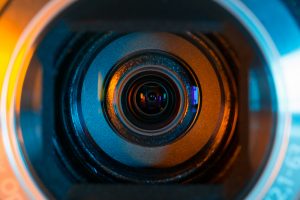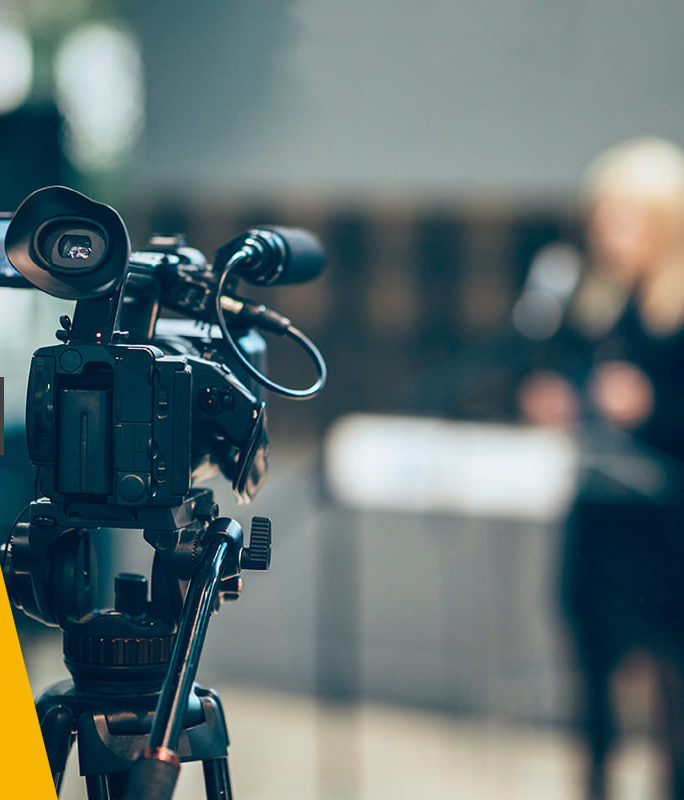Tips For Shooting An Event Video
Know Your Event
Proactively learn what the event is all about, because the more you know, the better your mind can map out the plan of attack. The first order of business is to ensure you have an open line with the event organizers. Schedule a sit-down and talk about the details of the event, because you need to know and understand what their needs, requirements, and expectations are. While at it, don’t forget to ask for a copy of the detailed program.
Know Your Equipment
There is standard equipment and there are those that you include depending on your site inspection and chat with the organizers. Whatever you do, don’t forget to bring backups or extras like mics, batteries, flash drives, etc. Since the equipment is technical, aside from the organisers, be sure to know who the event’s technical point people are.
Watch Other Event Videos
No two events are alike, but there will be similarities between events. For inspiration and techniques, study other event videos. See how certain things are done in others’ events and pick up some pointers. It’s all about continuous discovery and learning.
Make a Shot List
When storytelling,“You must begin with the end in mind”, as an old adage says. The important thing is to have a vision of the end product. Be as detailed as possible with your shot list – and actually shoot from your list at the event.
Be on Your Toes
Anticipation is a talent as much as a product of, again, preparation. When you know how the program starts, what happens in the middle, and how it’s going to end, you’re already on top of things. So, congratulations! However, as it’s ‘live’, expect the unexpected.

Tips for DIY Videography
Before you start, ask yourself: “What’s the story that I’m trying to tell?”
Call this a brainstorm, call it a creative brief, call it whatever, just take some real time to consider what it is you’re trying to say. Whether its a 6 second Vine video or a feature length documentary, the good ones all tell a story. Think about what your subject is. Think about how long you want the video to be. Pick some reference videos or photos or magazine clippings so you can concretely communicate your ideas to a collaborator. And stay away from vague, ambiguous language – like “commercially”, “innovative”, or “cutting-edge” that means something different to everyone.
Understand your audience.
Who is this video for? Is it for a room full of suits? Next year’s music fest attendees? Knowing your audience will shape the way you approach telling your story. Don’t get me wrong, some of the greatest works in cinematic history weren’t made for the audience, the audience came because the work was brilliant. But save that for your next Citizen Kane attempt, and consider who’s watching your stuff, now
Shot List!
This is critical for anything scripted. And it actually applies to live events, too. The worst thing any videographer can hear when showing up to film is, “just get everything”. That statement is simultaneously overwhelming and impossible. Take the time to think about which wide shots you’d like, which guests, attendees, or characters are important to the story, and what types of B-Roll, close ups, and cutaways you need to tell your story. This will help you craft your piece, later.
Know your locations.
In an ideal world, you do a location scout of every location before you film there. However, especially in the videography world, time and budget don’t allow for this. In turn, it becomes very important to find out the lighting conditions of each location. Are there big windows that will provide a lot of natural light during the day? If it’s at night time, how will the location be lit? Most times, evening events are dimly lit resulting in the need for faster lenses or external lighting units – whether they are on your camera, or off of it. Knowing these things ahead of time and planning accordingly is crucial. I can’t emphasize this enough. CRUCIAL.
Know your gear.
This one falls more on professional videographers than the people who hire them, but if you do hire a videographer, you’ll be much more prepared to have an intelligent discussion if you take a little time to familiarize yourself with some basics. Camera technology is evolving faster than ever, so I won’t overwhelm you with details, but here are some basics
Tips for Creating Successful Event Videos
Choose Your Style
Before you begin filming your live event, make sure that you have a clear concept of what you want the end product to be. There are countless reasons to create video content, which means that your video should be aligned towards a focussed, achievable goal from the start. Looking to educate viewers about your brand and its services with a live demonstration? Then a simple TED Talk-style video, with your cameras mounted on tripods, might work best. But if you’re trying to capture the flashy, explosive energy of a concert to attract audiences for the next one, a close-up highlight reel could be a better option. Think about what kind of event you’re filming, think about what you want it to accomplish, and then begin building a production framework from there.
Make A Plan
Because of the inherently spontaneous nature of live events, you might feel like you can just call in a couple camera ops and then have them wing it. But the exact opposite is true: Event videos require just as much–if not more–planning and pre-production than a traditional video. Map your location in advance, stick to a tight time schedule, and make sure that everybody in your crew is familiar with their responsibilities. Remember, unlike with a traditional video shoot, if somebody bungles their take, calling “cut” is not an option.
Prep Your Sound
Arguably the hardest part of live event filming is making sure that your sound quality stays up to snuff. It’s possible that you will not not have the opportunity to use traditional mics while moving around a venue, which means that you may need to either use smaller mics for each individual camera or (if this is an event with performances that utilize microphones) plug directly into the venue’s sound system. But even then, be careful. Just because your audio sounds good on the venue speakers does not mean that it’s recording well. Have a sound engineer on-hand to carefully monitor for peaking, distortion, and other potential audio issues.
Keep It Consistent
When you have multiple cameras filming multiple aspects of a live event, it is important to double check that all of your footage stays stylistically and technically consistent. Set your white balance in advance, rather than relying on every individual camera’s “automatic” setting, for a crisp, consistent shoot. If there are any special considerations that must be made because of the venue’s lighting (especially if it’s outside or otherwise inconsistent) determine those before the shoot so that the entire crew has a course of action ready.
Believe In B-Roll
Even once you’ve checked off every frame of your shotlist, don’t put down that camera! Your b-roll footage will be especially invaluable during a live shoot – things like shots of the audience can help establish context for the event, make scene transitions easier, and cover up any cuts that you might have to unexpectedly add during post-production. And believe us when we tell you that there will always be unexpected problems to contend with during the creation of an event video.
How to Shoot Video Like a Professional Videographer
Shoot Steady Video
A tripod is an easy answer to producing steady video, but avoid becoming dependent on it. You can shoot steady video without lugging around a lot of gear. Get your body in position so that every breath you take doesn’t lead to unwanted camera motion. Use the ground, a wall, or another object to brace the camera and get interesting visual perspectives. By ditching the tripod, you have the freedom to move around a scene without being anchored in one spot.
Produce Creative Shots
If you don’t want your videos to look as though they came from a surveillance camera, you’ve got to learn to play with angles and perspective. Producing interesting videos involves learning creative shooting techniques.
Practice Widescreen Videos
With the prevalence of smartphone cameras, even home videos are trending toward widescreen formats, such as a 16 by 9 ratio. Think of how you can make this extra visual space work for you.
Avoid Unnecessary Zooms and Pans
Picking up a camcorder for the first time has just about everyone wanting to hit the zoom button on every shot while panning across the horizon. The result can leave viewers seasick.
Get Good Results When Shooting Outdoors
You’d think outdoor videography would be simple because the sun provides the lighting, but to get the best outdoor results, you have to watch the position of the sun closely.

How To Film an Event
Write a Plan
Shooting an event can get really tricky. There’s usually something that’s the center of the event, whether it’s a performance, a speech, a prize-giving, etc, as well as the audience or crowd, and the atmosphere of the event. Each of these elements has to be included in the plan with the right balance so as not to waste any of your assets.
Keys to A Successful Event Video
One of the keys to success in capturing an event on video is the formation of the right crew for this particular event. A director, cameraman, or sound engineer might be great at their job and highly qualified, but nothing works without them having the right specialty. Just like a heart surgeon would not perform plastic surgery, you have to make sure the team you pick for your sports event is specialized in such events, which would substantially differ for example from a conference on astronomy.
Live Event Camera Set-up
The first thing you have to make sure is available while shooting your event is the variety of angles. Whether you are using one camera or more, you need to make sure the organizers take into account this issue while setting up the stage or the hall where the event is taking place. Also, if there are seats for the audience, it would serve you best to secure a seat in middle for front shots.
Camera Positioning
When you position the camera, you have to know what your limitations are. If you’re only using one camera, keep it close to the stage, because if you’re only shooting the event from one spot, it should obviously be focused mainly on the main performance. However, if this is the case, then you should at least manage to get a sliding deck so that you can move smoothly from one angle to another without causing any disturbance to the video or any rigid movement.
Boxed Zones
You have to mark your safe zones from which the shooting will take place. You don’t want anything to disturb your camera, (such as someone from the audience mistakenly bumping into your cameraperson, or stumbling upon one of the wires). You also don’t want the shooting to depend upon the cameraperson’s steady hands, especially if the event will last a few hours.

Recent Comments